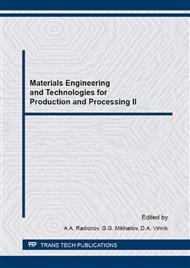p.135
p.141
p.149
p.159
p.163
p.169
p.175
p.181
p.185
Foamer Influence on the Foam Concrete Properties Obtained in the High-Speed Foam Generator
Abstract:
Recently, there has been an increasing interest to the production of the non-autoclaved aerated concrete. It has a number of advantages in comparison with other materials: low power consumption of manufacturing, high fire resistance, environmental safety, bio persistence, as well as excellent insulation properties. However, its production involves a number of problems: insufficient ultimate strength, high shrinkage, high susceptibility to the parameters of technology, and the quality of raw materials. It is a well known fact that the formation of the foam concrete structure and its main running abilities are affected not only by the mortar part, but also by the chemical nature of the foaming additive, its basic physical and chemical characteristics, as well as by the parameters of foam, produced on its basis.The paper contains an assessment of availability of the technical foam production for manufacturing of the heat-insulated constructional foam at a high-speed cavitation plant involving use of fly ash from the Central heating and power plant. We used the protein and synthetic foaming agents for the work. The authors investigated the influence of process-dependent parameters of a laboratory plant on the technical foam density and foam stability coefficient in the cement paste. The physical and mechanical properties of the non-autoclaved aerated concrete produced with investigated foams are defined. The non-autoclaved aerated concrete samples with physical and mechanical properties allowing its use in production are produced.
Info:
Periodical:
Pages:
163-168
Citation:
Online since:
September 2016
Authors:
Price:
Сopyright:
© 2016 Trans Tech Publications Ltd. All Rights Reserved
Share:
Citation:


